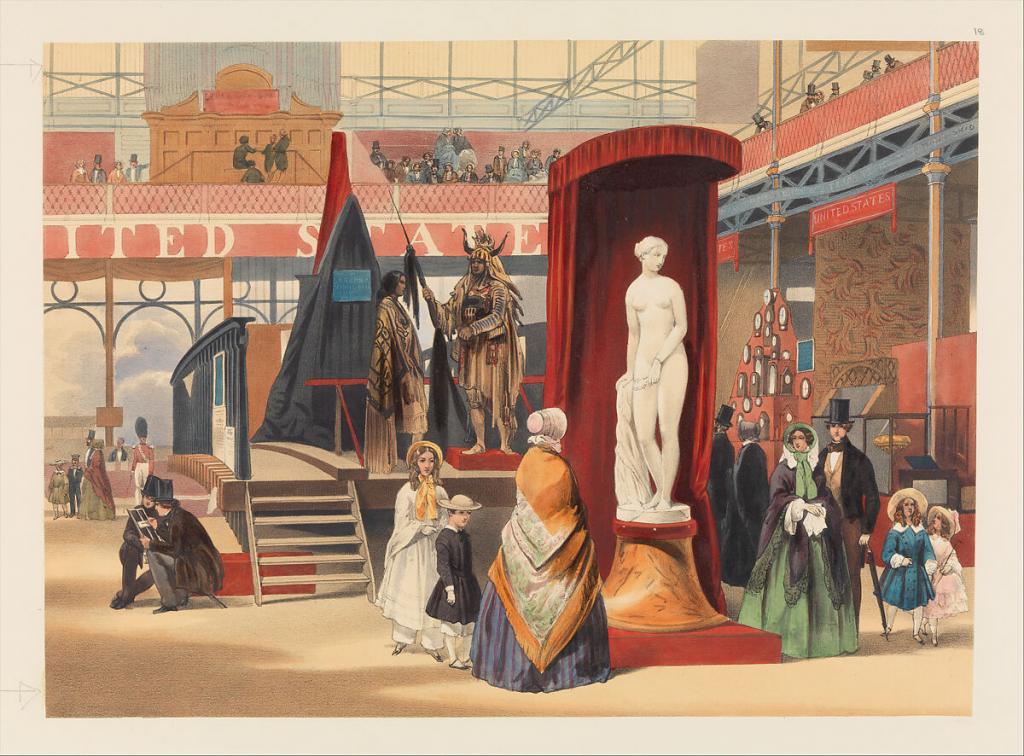The Crystal Palace (London, 1851)
13th public exhibition of the Greek Slave: 1 May 1851 through 15 October 1851
The Greek Slave, along with Fisher Boy, returned to London in 1851 as part of the Great Exhibition's United States section. Powers himself was initially unaware of either statue's inclusion, as the appearance had been arranged without his knowledge. The general consensus of critics and vistors alike seems to be that the United States section was the weakest in the Exhibition, with the Greek Slave being its primary redeeming element.
American and European visitors alike praised the statue, with one visitor describing the display: "I ought to say something of your Greek Slave which there occupies a distinguished place. It is set forth by a dark velvet niche and small canopy where it stands to receive its merited adoration, and around it there is a continuous succession of silent visitors; to make observations seems not to be the fashion—gentlemen would imagine they displayed too much knowledge of the nude & ladies, if they criticised, might seem to pretend to a greater merit than they possessed" (qtd. Wunder 247). Observations of Powers's anatomical detail (or, at times, lack thereof) remained the main point of criticism, as did ongoing discourse regarding race in the context of his work.
After the Exhibition closed on October 15, the Greek Slave was awarded a bronze medal. This result shocked Powers, who perceived it as a slight against his work given that 83 bronze medals were awarded in the sculpture category alone, compared to only three gold medals. Offended, he ultimately refused to accept the medal.
John Absolon, View in the East Nave; The Greek Slave, by Power [sic], from "Recollections of the Great Exhibition, 1851" Source: The Metropolitan Museum of Art
Source: The Metropolitan Museum of Art
Coordinates
Longitude: -0.164113500000
